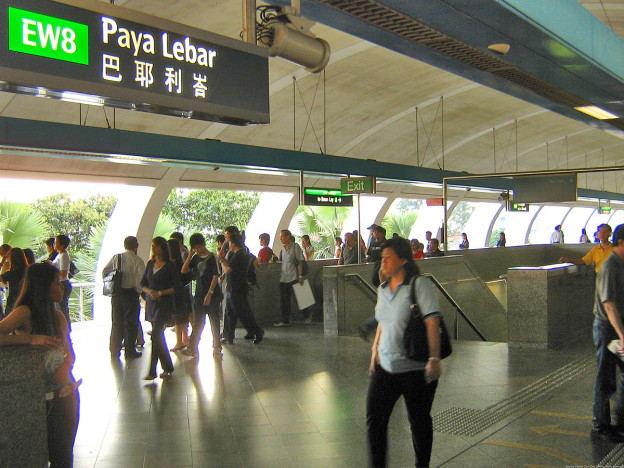The city of

Singapore, 1954. Originally known as the Singapore International Airport, it was built to replace the old Kallang Airport when the former could no longer be further expanded. Over time, control of the airport was transferred to the Republic of Singapore Air Force (RSAF). This shift from civilian to military started late 1967. In 1980, the airport was rechristened to Paya Lebar Air base following, which in 1981, Changi Airport became the civilian airport for the country. Paya Lebar Airbase thus became solely for military use.
Ever since then, residential estates in the area have counted the roar of airplanes that frequently blaze across the sky as an annoying exception to be made. If you wanted to live in the area, then the sound of planes was something you were going to have to get used to.
The presence of the airbase has also greatly impacted building heights. Buildings in Raffles Place, Marina Centre, Marina Bay Sands, Kallang and Bugis have a height restriction of up to 280m, which for a country with limited land, is the opposite of maximising verticality.

Marina Bay
There’s been talk that with the move, the site can be converted into a new residential estate, built with all the sensibilities of the new towns the government has erected over the years. The move however, is expected to be a long and arduous process – one that is likely to see some movement by 2030 at the earliest.
While it’s hard to speculate on what exactly the site will be home to, one thing is for certain; construction of a new residential, commercial and/or industrial zone will be made with all the improvements and solutions the authorities would have gained.
Reaping the harvest
No longer burdened with the constant drone of military planes overhead, Paya Lebar residents stand to benefit the greatest.
Future developments by way of residential and commercial are also expected to have a positive albeit tangential effect on the value of their homes. Such things are usually inevitable, since land by virtue of it being limited, is therefore inherently valuable in Singapore.
Most of this development will occur in a slight bubble as the site itself is not particularly central and since west of the airbase flows the Serangoon River, few developments currently occupy that treasured spot.
The river is bisected by two roads – Tampines Road leading into Hougang and Buangkok E Dr which leads to Buangkok Drive. Both roads run across the KPE and a large swath of land near where the Serangoon River is. Located close to the edge of the river is new development, Kingsford Waterbay. The condominium has a pretty good view of everything that is happening south-east of it. Come new developments, and especially if they are commercial/retail, residents can expect to see a positive increase in the value of their property.

Serangoon River Credit: alantankenghoe (flickr)
But once the airbase is completely gone, the first thing to rise won’t be prices – it’ll be building heights.
Currently flats in the area are 12 to 15 storeys high but in the future, 30 to 40 storey residential buildings, even office buildings can see the light of day. The relocation of Paya Lebar Airbase will free up around 800 ha – much bigger than Bishan and Toa Payoh – for these new homes, offices and maybe even factories. This brings plenty of jobs to residents in and around the area, including people living in the Buangkok, Upper Serangoon and Kovan areas.
It’s all part of the great plan to decentralize the CBD and to bring jobs closer to where people work. The Singapore culture is still a long way from achieving that hallowed work/life balance but with infrastructure being built around that seminal idea, it’s at least a good first step in a right direction.


